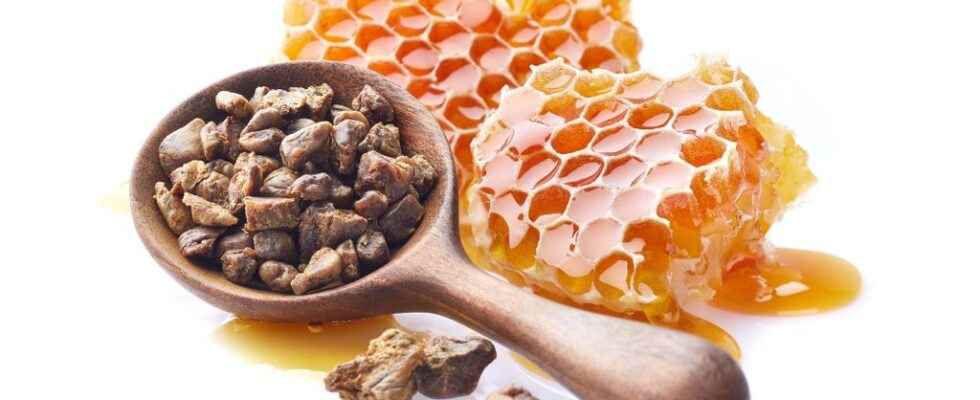Propolis is a substance that is made up of several elements: tree resin or balms, wax, volatile or essential oils, pollen and other various materials. There are a multitude of varieties of propolis, which makes it a resinous substance with a complex composition. How to use it ? What are its therapeutic properties?
Presentation of propolis
Propolis is made by bees from resinous plant substances. These foraging insects then mix it with their secretions (wax and salivary secretions) in order to protect the hive from microbes and parasites and thus to guarantee its good health (the term “propolis” means “entrance to the city” in ancient Greek). Propolis thus plays the role of a real anti-infective mortar!
To understand the history of this resin, you have to go back over 1000 years BC. Propolis was used in particular by the Egyptians who used it to embalm the dead. As for the Roman soldiers, they appreciated it for treating wounds during combat.
Properties and active ingredients of propolis
Propolis is first known for its antibacterial and antiviral properties: the flavonoids it contains help strengthen the body’s natural defenses, stimulate the immune system and act against intestinal dysbiosis. Propolis therefore makes it possible to fight against external aggressions such as bacteria, viruses and other microbes due to its naturally antibiotic action (and without side effects). In winter, it is essential to prevent colds and nasopharyngitis.
This substance is also used for skin care. Light burns, skin wounds, acne, eczema, psoriasis… propolis has purifying, healing, analgesic and anti-inflammatory properties. It is sometimes present in anti-aging creams and contributes to cell repair.
Finally, propolis is a formidable antifungal: it helps to fight against warts, herpes and other mycoses related or not to the Candida albicans.
How to use propolis?
Propolis is available in different forms. The spray and syrup are perfect for relieving sore throats and stimulating the body’s natural defenses. Fragile people can also use it every other week for prevention in periods of winter epidemics. To do this, take 2 capsules morning and evening (i.e. 800 mg of pure propolis per day).
The mother tincture is used in particular as a curative: it can be diluted in a glass of water or a herbal tea or be applied on wounds or on acne pimples, bedsores, eczema, impetigos, warts , canker sores, etc. Use a small brush to apply the propolis tincture locally and daily.
In case of infections (cystitis for example), from the first symptoms, take every day and for a week 9 pure propolis capsules (ie 2 grams) in three times; then go back down to 4 capsules in two doses over the next two weeks.
As for black propolis and propolis cream soaps, they moisturize, soothe and purify the skin.
Contraindications of propolis
Even though propolis is a natural product, care should be taken before ingesting this substance or applying it to the skin.
People with pollen allergies should avoid consuming propolis-based products. Allergies can also develop as the treatment progresses; it is therefore advisable not to use propolis for more than two or three consecutive weeks. Finally, there is a cross allergy to tiger balm.
What side effects in the event of allergies? Irritation of the skin or mucous membranes, edema, renal failure in rare cases, etc.
Loading widget
Subscribe to the Top Santé Newsletter to receive the latest news for free
